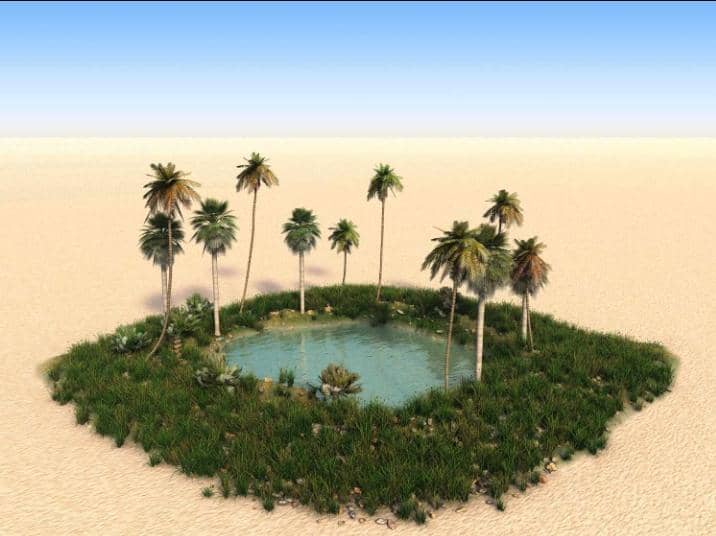The Sahara Desert, the world’s largest hot desert, covers a vast expanse of northern Africa.
However, scattered throughout this arid landscape are small pockets of lush vegetation and fertile land known as oases.
These oases, sustained by underground water sources, provide a vital habitat for plants, animals, and humans alike.
One of the most famous oases in Africa is the Siwa Oasis, located in the western desert of Egypt near the Libyan border. This oasis is approximately 560 km west-southwest of Cairo and measures around 10 km long by 4-5 km wide.
Siwa is dominated by the limestone hill of Jebel Mawta, which contains ancient tombs dating back to the Pharaonic era.
The oasis is home to dense palm groves, gardens, and orchards, as well as the Siwa Birket lake and the island of Fatnas Spring.
Another significant oasis in the Sahara is the Al-Hasa region of Saudi Arabia, which has been an important agricultural area for thousands of years.
Today, Al-Hasa continues to be a leading producer of dates, rice, corn, sheep, cattle, and eggs.
The region also sits atop one of the world’s richest oil fields, making it an important center of international trade.
In total, there are over 90 major oases throughout the Sahara Desert, each supporting unique communities of plants, animals, and people. These oases are sustained by underground aquifers, with water reaching the surface through natural springs or manmade wells.
Oasis communities have traditionally planted strong trees like palms around the perimeter to protect their crops and water sources from encroaching desert sands.
Historically, oases have played a vital role as rest stops along trade routes crossing the vast Sahara Desert. Whoever controlled an oasis also controlled the trade along the route, making them desirable to political, economic, and military leaders.
The location of oases has informed the paths of major trade routes, such as the Darb El Arba’īn route from Sudan to Egypt and the caravan route from the Niger River to Tangier, Morocco.
Today, oases continue to be important centers of agriculture and habitation in the Sahara. However, many oases face threats from desertification, a process of land degradation in which fertile land becomes desert.
Overgrazing, deforestation, and climate change are all contributing factors to desertification in the Sahel region, which forms a transition zone between the Sahara and the savannas to the south.
Despite these challenges, the oases of the Sahara remain vital havens of life in one of the harshest environments on Earth. These lush pockets of vegetation, sustained by underground water, provide a home for diverse plant and animal species, as well as human communities that have thrived in the desert for millennia.

